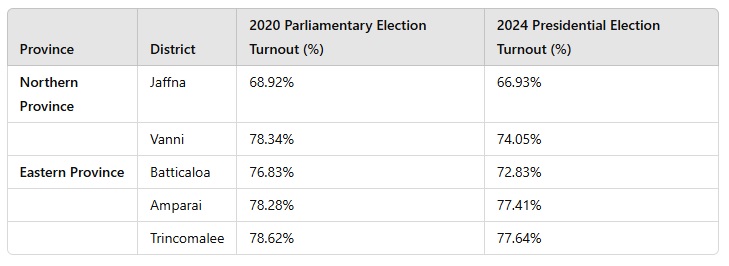
Millions of voters across the island are heading to the polls today, as Sri Lanka’s parliamentary polls get underway.
There are 17.1 million eligible voters, including 1 million first-time voters, who will elect lawmakers to the 225-member parliament for a five-year term.
Why the election?
The current election follows the early dissolution of Sri Lanka’s parliament on September 24, just days after the newly elected President Dissanayake took office. Though parliament’s term was due to end in August 2025, Dissanayake had only three MPs from his National People’s Power (NPP) coalition in parliament, necessitating a fresh election to gain support for his platform.
The campaign period wrapped up 48 hours before election day.
How does it work?
Sri Lanka’s parliament consists of 225 seats, with members serving a five-year term.
Voters will elect 196 members across 22 constituencies under a proportional representation system.
The remaining 29 seats are allocated based on the proportion of votes each party receives island-wide, creating a “national list” to reflect the overall support for each party.
Voters can cast up to three preferential votes for candidates from their preferred party.
For national list seats, the number of national list candidates for a party is determined by dividing the number of votes the party wins by the total votes cast and multiplying by 29.
Polling is held at 13,421 stations across the country from 7 a.m. to 4 p.m. local time. Paper ballots are used, and voters must present a valid form of identification—such as a National Identity Card, passport, or other official ID—to vote.
The Sri Lankan police and military, which continues to occupy the Tamil homeland, will be heavily deployed. Police spokesman Nihal Thalduwa said they were using drones for the first time to monitor an election, with 80,000 police officers deployed.
What is happening in Tamil Eelam?
In the Tamil North-East, more than 2,000 candidates are standing for the 28 seats on offer.
Jaffna - 396 candidates for 6 seats
Vanni – 423 candidates for 6 seats
Batticaloa – 392 candidates for 5 seats
Amparai – 640 candidates for 7 seats
Trincomalee – 217 candidates for 4 seats
Read more: Candidates target the Tamil nationalist vote as Sri Lanka's general election looms
Turnout
Initial figures suggest turnout may be slightly lower than previous elections. In the Tamil North-East, turnout in Sri Lankan elections has usually lagged behind the rest of the island, as part of a longstanding mistrust of Sri Lankan state institutions.
See previous turnout in the last two island-wide elections, as per Sri Lankan govenrment data, below.

Counting votes and declaring results
Once voting ends at 4 p.m. local time, counting begins immediately.
Final results are expected within days, with the Election Commission announcing the winning party by Friday.
To form a government, a party or coalition must secure a minimum of 113 seats.
Following the announcement of results, the winning party will form a cabinet, and the new parliament will meet on November 21.

